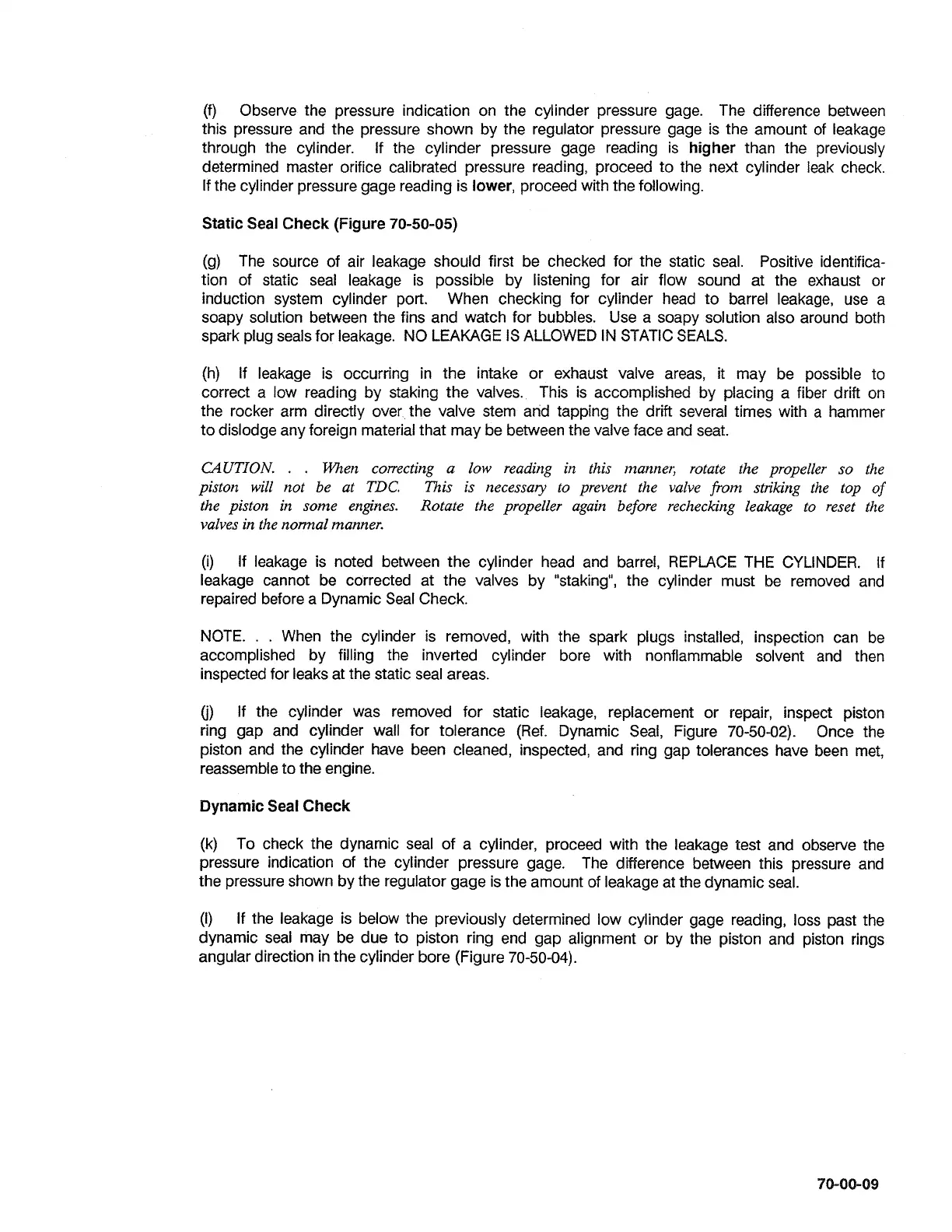(9
Observe the pressure indication on the cylinder pressure gage. The difference between
this pressure and the pressure shown by the regulator pressure gage is the amount of leakage
through the cylinder. If the cylinder pressure gage reading is
higher
than the previously
determined master orifice calibrated pressure reading, proceed to the next cylinder leak check.
If the cylinder pressure gage reading is
lower,
proceed with the following.
Static Seal Check (Figure
70-50-05)
(g)
The source of air leakage should first be checked for the static seal. Positive identifica-
tion of static seal leakage is possible by listening for air flow sound at the exhaust or
induction system cylinder port.
When checking for cylinder head to barrel leakage, use a
soapy solution between the fins and watch for bubbles. Use a soapy solution also around both
spark plug seals for leakage. NO LEAKAGE IS ALLOWED IN STATIC SEALS.
(h)
If leakage is occurring in the intake or exhaust valve areas, it may be possible to
correct a low reading by staking the valves. This is accomplished by placing a fiber drift on
the rocker arm directly over the valve stem and tapping the drift several times with a hammer
to dislodge any foreign material that may be between the valve face and seat.
CAUTION.
. .
men correcting a low reading in this manner, rotate the propeller so the
piston will not be at
TDC.
This is necessay to prevent the valve from striking the top of
the piston in some engines. Rotate the propeller again before rechecking leakage to reset the
valves in the
nonnal manner.
(i)
If leakage is noted between the cylinder head and barrel,
REPLACE THE CYLINDER. If
leakage cannot be corrected at the valves by "staking", the cylinder must be removed and
repaired before a Dynamic Seal Check.
NOTE.
. .
When the cylinder is removed, with the spark plugs installed, inspection can be
accomplished by filling the inverted cylinder bore with nonflammable solvent and then
inspected for leaks at the static seal areas.
(j)
If the cylinder was removed for static leakage, replacement or repair, inspect piston
ring gap and cylinder wall for tolerance (Ref.
Dynamic Seal, Figure
70-5082).
Once the
piston and the cylinder have been cleaned, inspected, and ring gap tolerances have been met,
reassemble to the engine.
Dynamic Seal Check
(k)
To check the dynamic seal of a cylinder, proceed with the leakage Pest and observe the
pressure indication of the cylinder pressure gage.
The difference between this pressure and
the pressure shown by the regulator gage is the amount of leakage at the dynamic seal.
(I)
If the leakage is below the previously determined low cylinder gage reading, loss past the
dynamic seal may be due to piston ring end gap alignment or by the piston and piston rings
angular direction in the cylinder bore (Figure 70-50-04).

